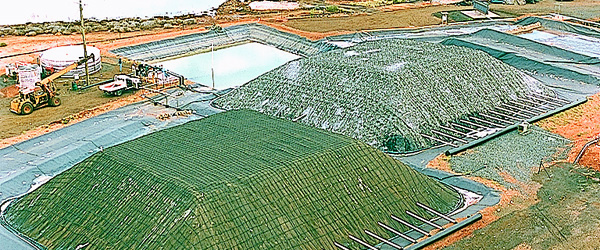Using AS/NZS 1554.6 effectively means rather more than requiring “Weld finishing to AS/NZS 1554.6”. The standard is an effective way to get the finish you want or need on stainless steel structures. This guide should help you to nominate the quality of weld to the standard.
Revision of AS 1528: Fluid Transfer in Stainless Steel Tube and Fittings
Connections are vital
Any visit to a dairy, beverage or food processing plant will drive home the critical importance of the connections between the tanks, mixers, driers, pumps, etc. The image above (courtesy of TFG Group) showing an image of a brewery is a typical example. These tubes and/or pipes carry the process materials, the heating or cooling or wash water, gases, and also dispose of the wastes.
Welding Dissimilar Metals
Welding the common austenitic stainless steels such as 304 and 316 to each other or themselves is routine and the easiest of fusion welding.
General Corrosion Resistance
The normal state for stainless
Stainless steels resist corrosion because they have a self-repairing “passive” oxide film on the surface. As long as there is sufficient oxygen to maintain this film and provided that the level of corrosives is below the steel’s capacity of the particular material to repair itself, no corrosion occurs. If there is too high a level of (say) chlorides, pitting occurs. As an example, 316 works well in tap water (<250 ppm) all over Australia, but will rapidly corrode in seawater because seawater has very high chloride levels (20,000 ppm).
200 series stainless steels - high manganese (CrMn)
Almost 7 years after former Nickel Institute Director Dr David Jenkinson's 2006 Technical Bulletin, ASSDA's technical expert, Dr Graham Sussex, revisits the CrMn grades of stainless steel.
12% Chromium Utility Stainless Steels
BACKGROUND
Almost all of the stainless steels in use have 16% chromium or more and have nickel or other additions to make them austenitic and hence formable, tough and readily weldable. However, the formal definition of a stainless steel is that it is an iron- and carbon-based alloy with more than 10.5% chromium. Historically, the corrosion mitigation industry regarded alloys with more than 12% chromium as stainless steels mainly because those alloys did not corrode in mild environments. Because of the perceived problem of high initial price when using stainless steels, alloys that are ‘barely’ stainless (and with low nickel
Guidelines for Use of Stainless Steel in the Ground
Stainless steel can provide excellent service underground. It is stronger than polymers and copper and its resistance to chlorides and acidic acids is significantly better than carbon or galvanised steels.
The Sustainable Score Card for Stainless Steel
The greatest challenge we face is the control of our own success. With 7 billion people on earth, all with an insatiable appetite for a high standard of living, the newest dimension of materials competition is sustainability.
Grade 316 - the 'first step up'
If a job requires greater corrosion resistance than grade 304 can provide, grade 316 is the 'next step up'. Grade 316 has virtually the same mechanical, physical and fabrication characteristics as 304 with better corrosion resistance, particularly to pitting corrosion in chloride environments.
Common specifications for flat products
Stainless steels are now cheaper than ever, but there is still room to minimise costs (see Table 1), which will improve the bottom line for individual companies, projects and the industry as a whole.
"L" and "H" and Standard Grades of Stainless Steels
The common austenitic grades of stainless steel, 304 and 316, are also available with controlled low or high carbon contents, know as "L" and "H" variants, with particular applications.
Strengths of Stainless Fasteners
Reasons for using stainless steel threaded fasteners are the same as those for selecting other stainless steel components - generally resistance to corrosive or high temperature environments. In addition to the obvious benefits in improved aesthetics and longevity however, there can be significant cost savings if the joint will require disassembly and reassembly.
Stainless Steel
The Workhorse of Hydrometallurgy
Posted 17 May 200

Stainless steel has earned a reputation as the material of choice for the mining and hydrometallurgical industries. This article discusses suitable grades and applications and the emerging opportunities for stainless steel in these industries.
Use of Stainless Steel in the Wine Industry
Stainless steels are widely used in the food industries, including wine production, because of their corrosion resistance and ease of cleaning which result in negligible product contamination.
Aspects of Mig Welding Thin Stainless Sheet
Principles of Mig Welding
According to the AWS Welding Handbook volume 2, MIG welding is "an arc welding process that uses an arc between a continuous filler metal electrode and the weld pool. The process is used with shielding from an externally supplied gas and without the application of pressure". The wire is usually supplied in spools and fed through to the welding arc by an electric feed motor, with no manual control ofthe wire feeding process ie semiautomatic.
Coated Abrasives for Surface Finishing - Part 1
Accurate specification of a surface finish is vital for extracting maximum functionality and durability from stainless steel components. Read Part 2. Read Part 3.
Cleaning your indoor stainless steel
Quick and easy tips for keeping that shine
Retaining a sparkling finish on stainless steel surfaces is just a matter of a few simple steps. And you don't need expensive products or special equipment - ordinary household cleaners are usually all that's required. You just need to bear in mind a few easy DOs and DON'Ts...
Coated Abrasives for Surface Finishing - Part 2
The last issue of Australian Stainless contained an overview of coated abrasives and guidelines for achieving the desired surface finish. This technical series continues with a comparison of grit size and hardness. Read Part 1. Read Part 3.
Coated Abrasives for Surface Finishing - Part 3
Our three-part series on coated abrasives concludes with information on choosing the correct abrasive product for the desired finish. Read Part 1. Read Part 2.
Building with Large Hollow Sections
Posted 1 July 2003

Stainless steel combines structural strength with corrosion resistance to form a superior construction material which additionally supports a range of aesthetically pleasing finishes.

















